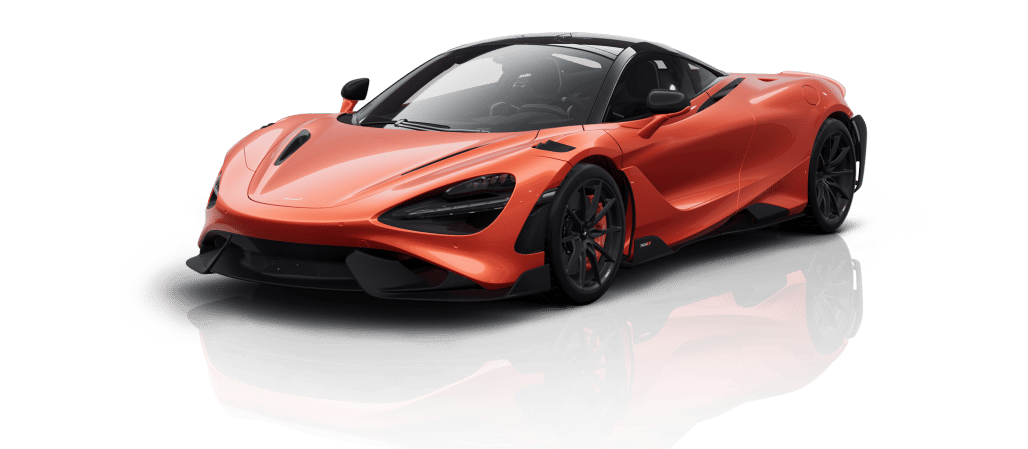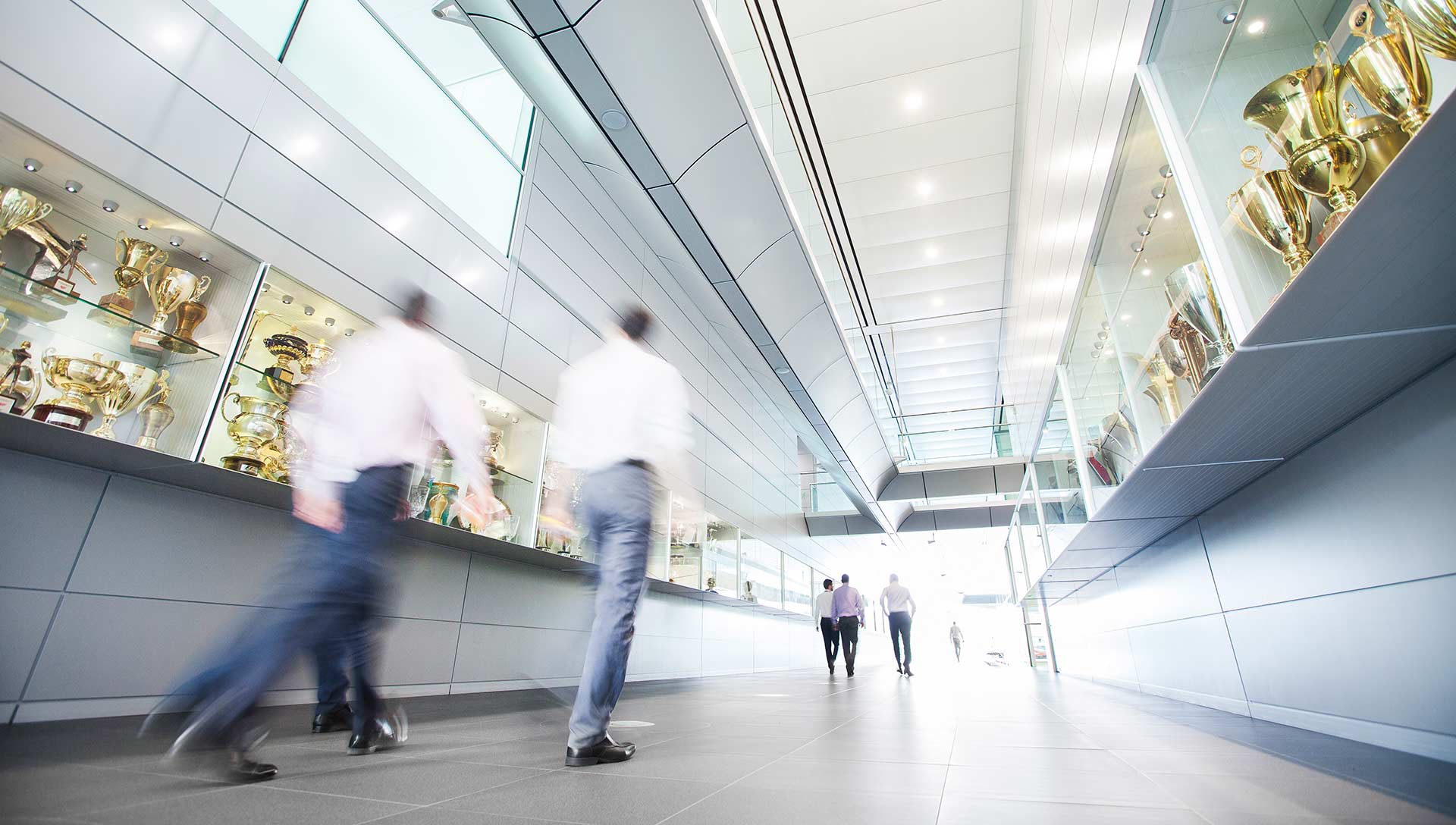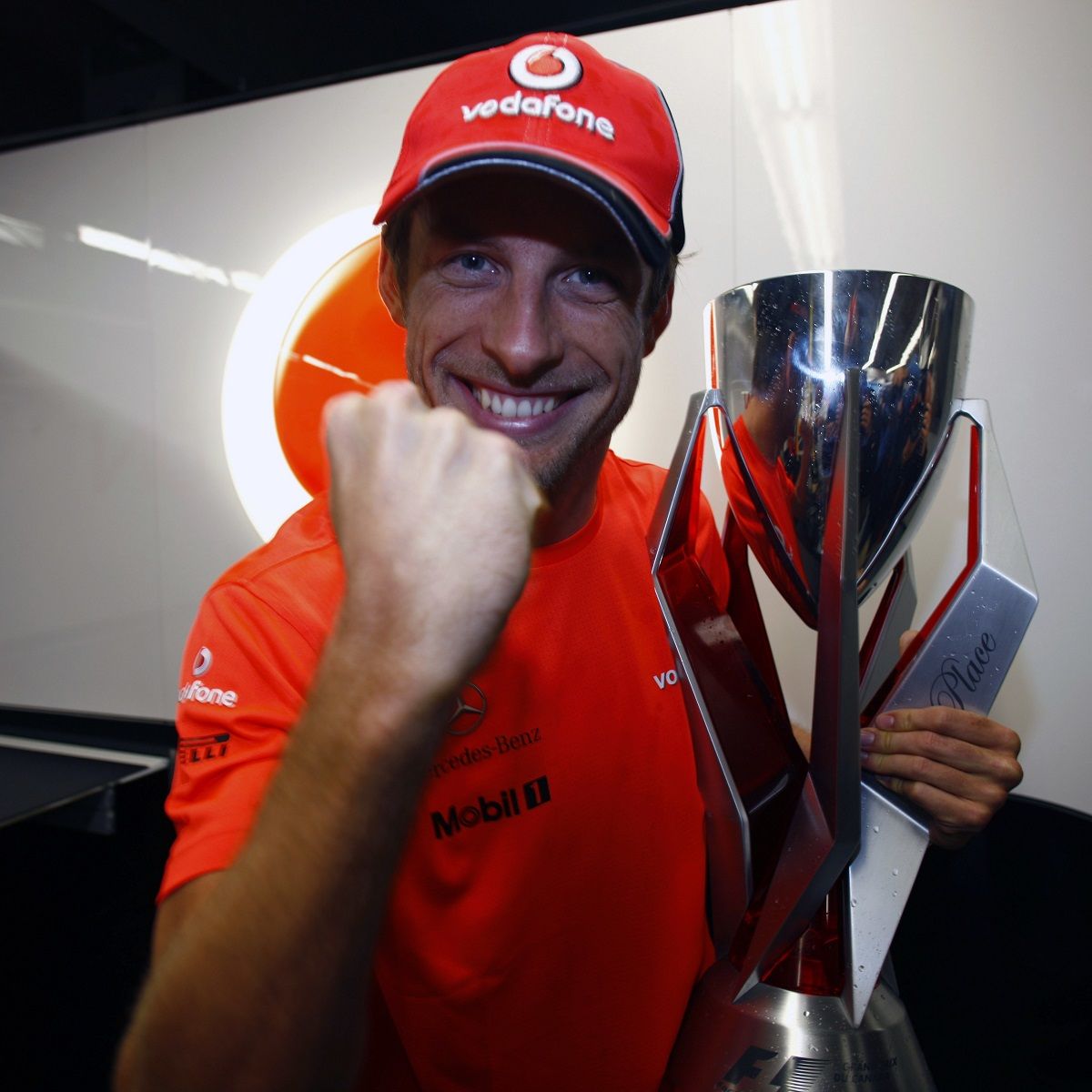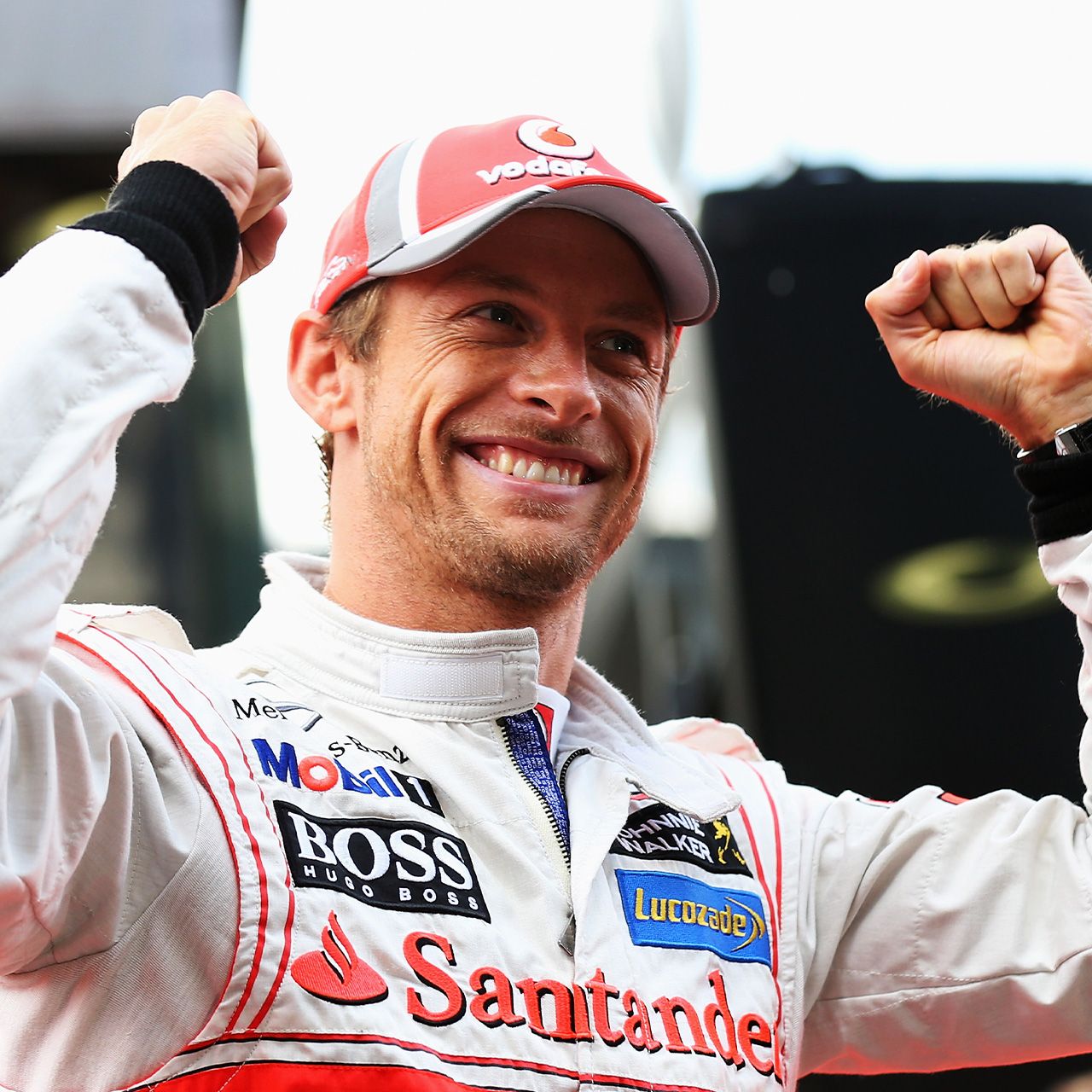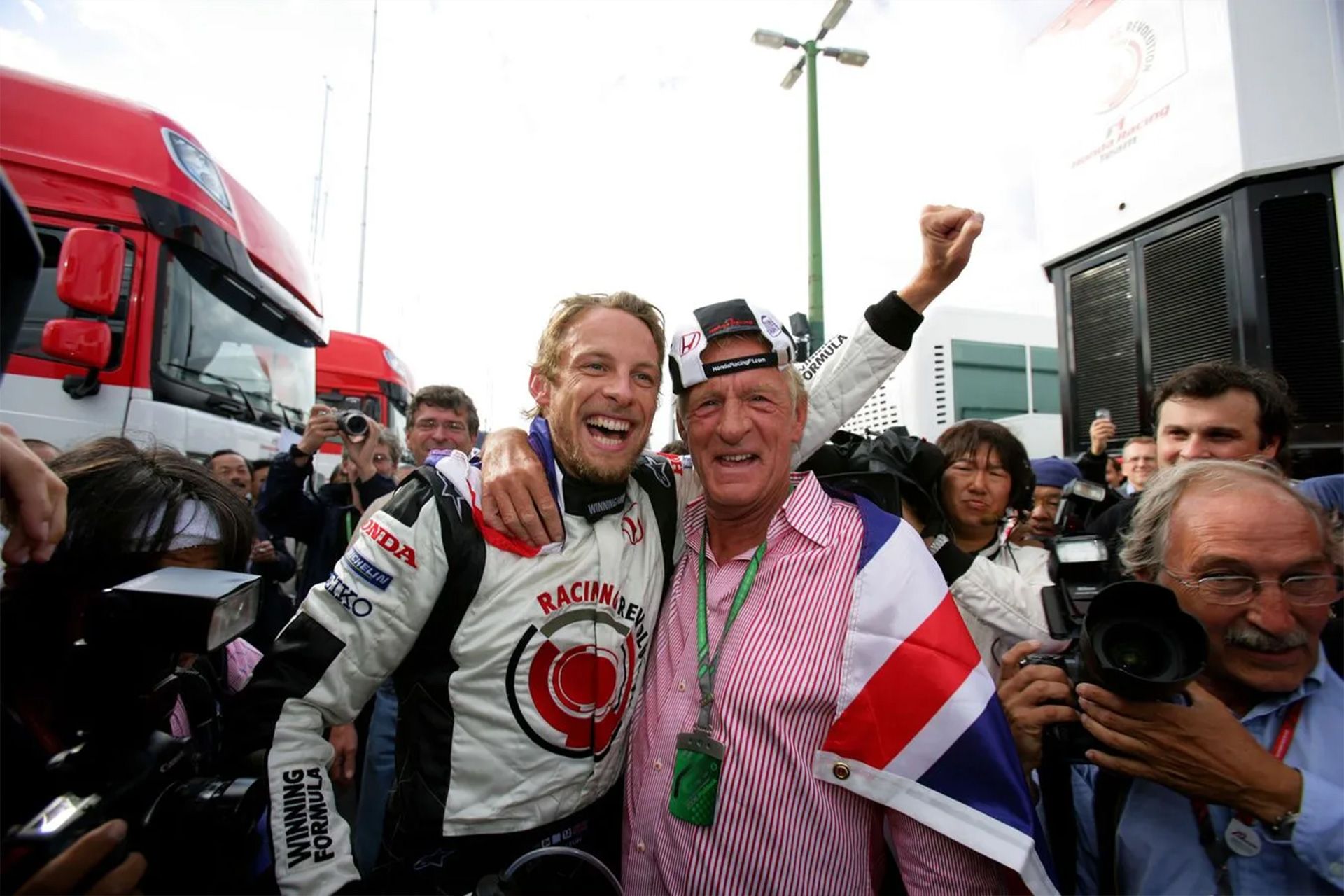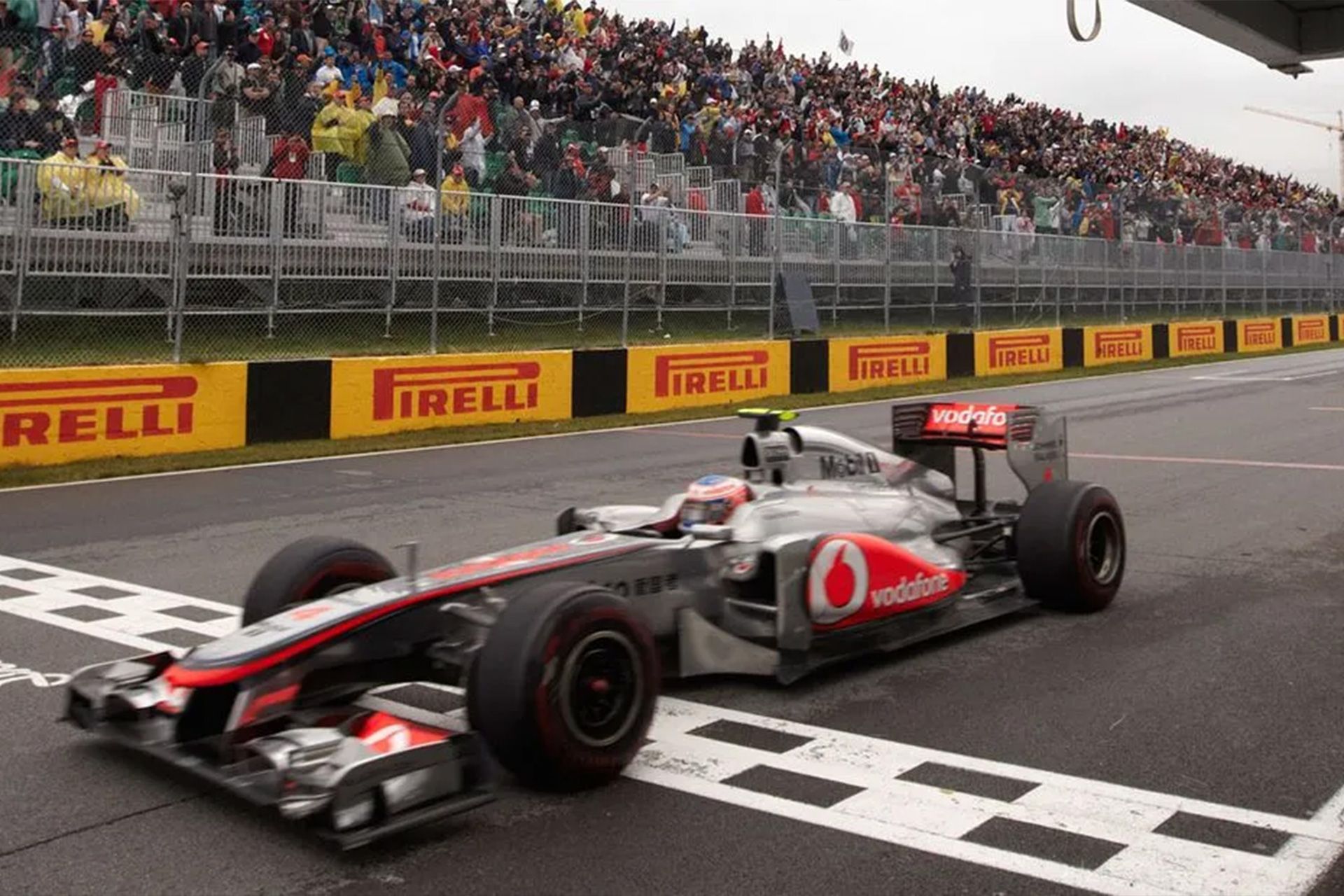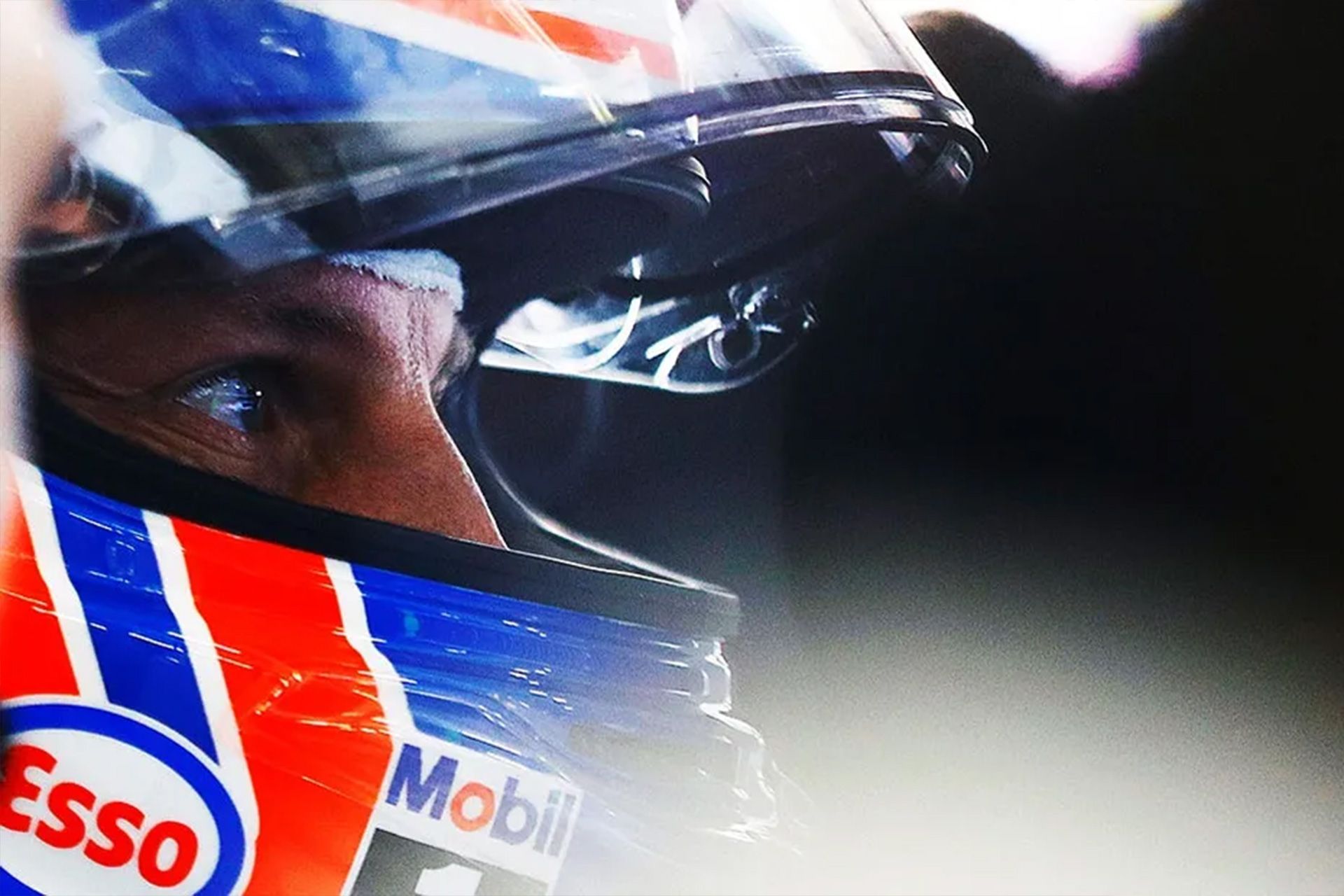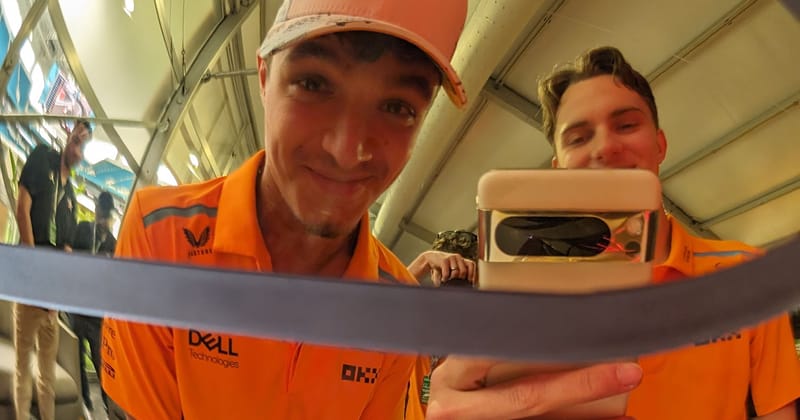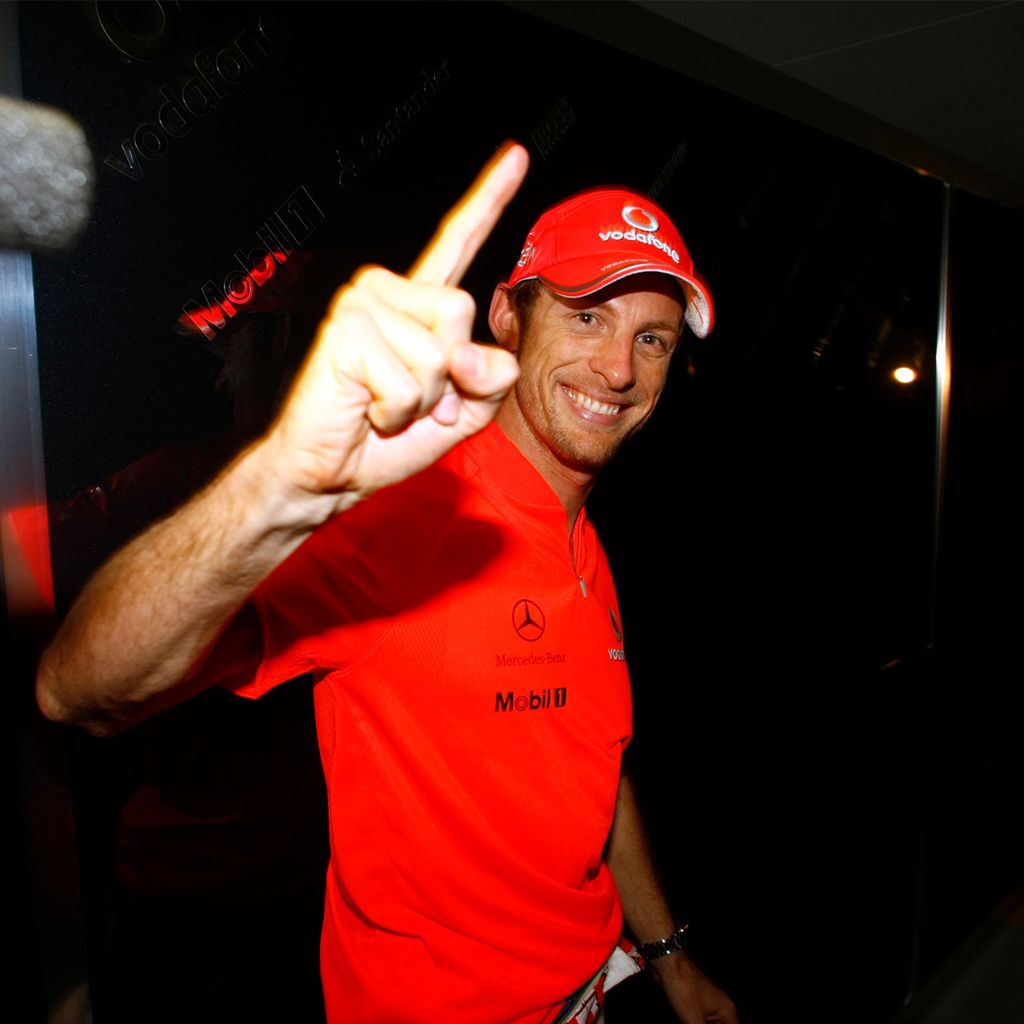
Jenson Button’s defining moments for McLAREN
The best Buttons: Jenson had many great days driving for McLaren, we’ve put together some of our favourites
Read time: 10.5 minutes
Jenson Button’s Formula 1 career was unusual in that his reputation grew even more after becoming a World Champion, during which time he claimed eight of his 15 victories with McLaren, while, perhaps more significantly, proving his mettle against legendary team-mates Lewis Hamilton and Fernando Alonso, between 2010 to 2016.
By that stage, the 2009 Formula 1 Drivers’ World Champion was a well refined driver, one whom Damon Hill said had matured like a fine wine. Former McLaren Race Engineering Director Hiroshi Imai, a tyre and brake specialist, claimed Jenson had the most cultured left foot of any driver he’d worked with.
Certainly, that’s what Jenson’s McLaren record shows: a driver who knew how to look after a set of tyres, with an instinctive feel for braking that made him the absolute king of the castle when grip was low. While regarded as an exceptional wet-weather driver, where Jenson truly excelled was in the boundary conditions on the crossover between wet and dry, instinctively able to find the grip where others could not. When cloud cover rolled over the track, you always thought you had a chance with Jenson in the car…
Last weekend’s Bahrain 8 Hours marked the end of Jenson’s distinguished professional motor racing career, 28 seasons after marking himself out as an exciting young British prodigy, winning the British Formula Ford title. To celebrate, we’ve looked back on a few of his greatest McLaren wins.
Setting the tone
2010 Australian Grand Prix
Jenson took his first McLaren victory in his second race for the team. The manner of the victory set a pattern for what was to follow, with Jenson simply doing a better job than his rivals in tricky conditions. The race started on a wet track, with all the usual mayhem that comes with that, including a first-corner collision between Jenson and Alonso, which dropped Jenson from P4 to P6. This may well have made his race.
With the track drying rapidly, the pit wall handed decision-making over to the drivers, and Jenson called himself in on Lap 6, two laps before anyone else. It left him last, and struggling to keep the car on the greasy surface, but he avoided any terminal mistakes and was soon the fastest car in Albert Park. When the order shook out, he was up to P2. That became P1 just before half-distance when Sebastian Vettel suffered brake failure, after which Jenson came home on cruise control.
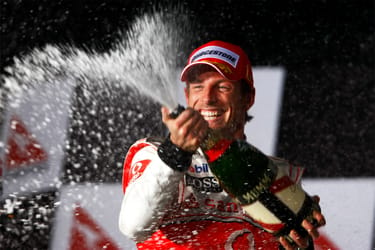
A pattern emerges
2010 Chinese Grand Prix
Only two races later, China was a very different sort of race to Australia, but shared a common theme: Jenson was able to keep the car on track when others couldn’t. With light rain falling, the race started on slicks – but cars started diving in for Inters on Lap 2. Jenson, however, opted to stay out on the slicks and was promoted to P2, behind Nico Rosberg, who had also stayed out.
The Shanghai International Circuit is a high-deg track, and with the rain shortly after petering out into a mist, the Inters burned and those on the tyre were forced to pit again for slicks. Then, when the heavy rain returned, Jenson took advantage of a lock-up from Rosberg to close the gap and take the lead. He held this through the pit stops, survived a Safety Car restart, and resisted a charge from Hamilton to take another victory.
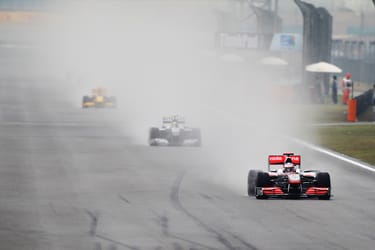
One for the history books
2011 Canadian Grand Prix
Several records were set at the 2011 Canadian Grand Prix, but the gist of the story is that Jenson won, and everyone got very wet. It’s the race for which he is arguably most famous, taking the lead coming onto the back straight of the final lap, having been dead last after the first 40 laps of the 70.
The race started behind the Safety Car, and finally got going on Lap 5, only for the Safety Car to return on Lap 8, following a collision between Jenson and Lewis. During which time, Jenson picked up a drive-through penalty for speeding behind the Safety Car. As the rain worsened, the race was red-flagged, and following a two-hour delay, Jenson collided with Fernando shortly after the restart, picking up a puncture. Following yet another Safety Car, Jenson found himself running 21st and last.
What followed was a bit of Jenson magic, as he confidently cut his way through the field. Jenson was up to P4 when the Safety Car was required again on Lap 57, and when that cleared, with nine racing laps left, he completed his mission, passing Mark Webber and Michael Schumacher before coming up against Sebastian Vettel. A half-slide coming onto the back straight cost Vettel, and Jenson was through. To this day, it remains the longest F1 race ever, featuring the most pit stops by pit-stops by a winning driver (six).
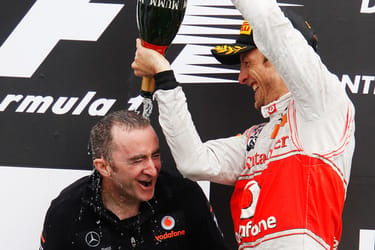
Peak Button
2011 Hungarian Grand Prix
Jenson’s 200th Grand Prix start was a real furball of a race. It features a lot of rain, a then-record 88 pit stops, a drying track, more rain, and a Jenson Button victory back at the site of his first win, some five years earlier. This was peak Button: Jenson at his most Jenson-like, rolling out the greatest hits.
Starting on Inters, he stopped a lap earlier than Vettel and had warmer tyres to pass on track for P2. Hamilton held the lead and had built a huge gap… only for Jenson to play the long game, reeling his team-mate back in towards the end of the stint. Not so much the tortoise and the hare, as the hare and the other hare with more patience. When rain started to fall again, shortly after the halfway point, Hamilton came in for Inters, but Jenson reckoned he could live with slicks. Jenson’s view was validated as he retained his composure in the rain, before seeing Hamilton pit again when the rain slowed, meaning Jenson was able to come home ahead of the chasing pack. “The man you need when the track doesn’t let you know what’s going to happen,” hailed Martin Brundle on TV commentary.
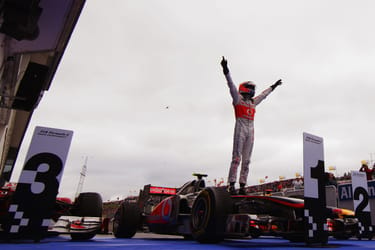
The eye of the storm
2012 Belgian Grand Prix
We talk a lot about Jenson as the calm head for the tough race, but that doesn’t mean he couldn’t win the vanilla races, too. The 2012 Belgian Grand Prix was Jenson’s only McLaren Pole and one in which he held his cool while everything happened behind him.
As history shows, there’s more than one way to approach Spa-Francorchamps, and in 2012, Hamilton took the high downforce route, while Jenson opted for the lower. It gave him more speed on the long, full-throttle sections of track, but required more care in the twisty middle sector. He put the MP4/27 on Pole and made a clean start, but behind him, mayhem ensued, as Romain Grosjean collided with and took out Hamilton, Alonso, and Sergio Perez.
When the race restarted, after the subsequent clear-up, Jenson ran off into the distance, leading every lap of the race and winning by 13 seconds.
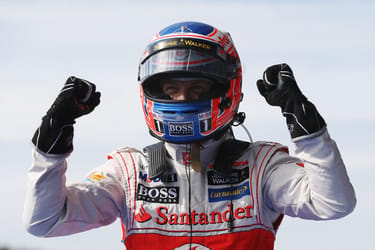
While Jenson will be best remembered for his wins - and rightly so - those of a McLaren persuasion will also look back on his final years fondly, when he remained committed to the team during a tougher period of our history. Jenson continued to play a key role on and off the track until his retirement in 2016, during which time he managed to find a way to continue scoring points for the team, even in races where the car shouldn’t have been competitive.
It was for this reason that both parties were more than happy to reunite for a one-off race in 2017, when Jenson replaced Alonso for the Monaco Grand Prix, when the Spaniard was away at the Indy 500. We saw a more relaxed Jenson for that race, who even joked on a call with Alonso that "I’m going to pee in your seat!"
In an entirely unfamiliar car with virtually no prep, after a period away from Formula 1 racing, he still managed to get through to Q3. Engine penalties robbed him of a chance to score points, before a late collision resulted in a DNF, but he put in a fine performance, despite what the result may suggest - one worthy of a World Champion.

